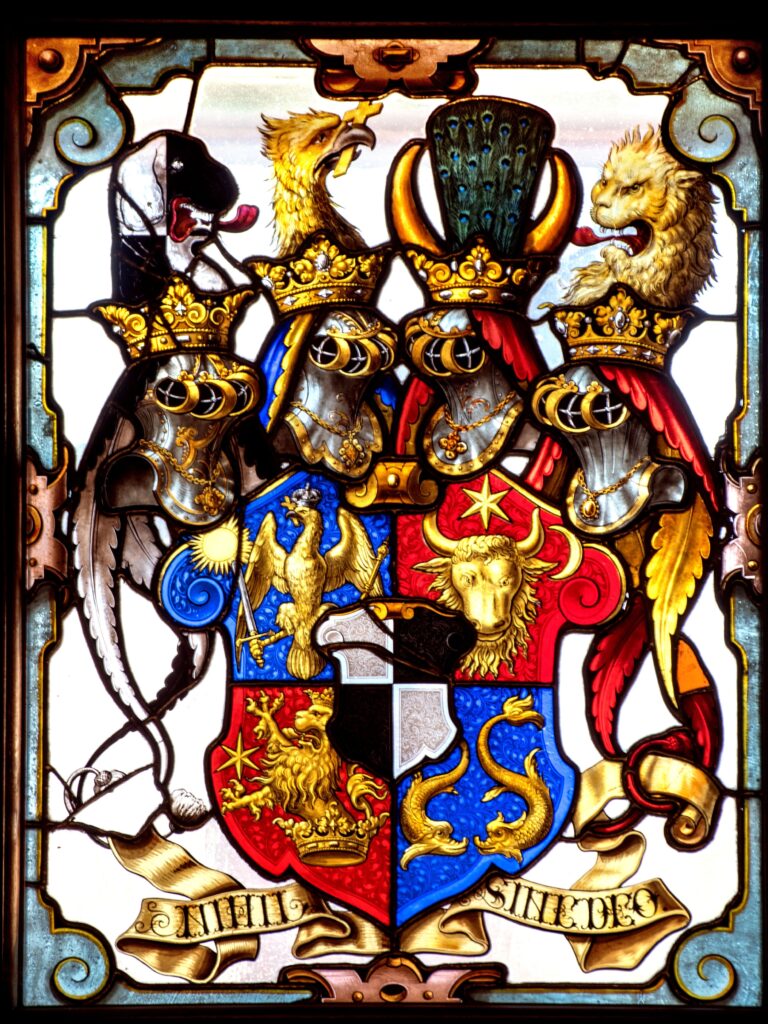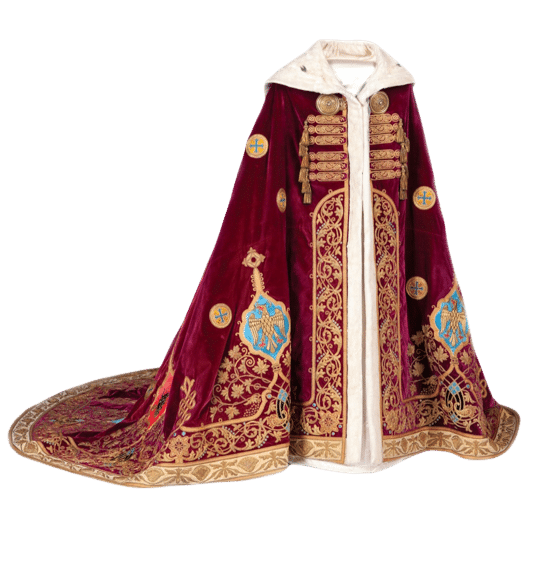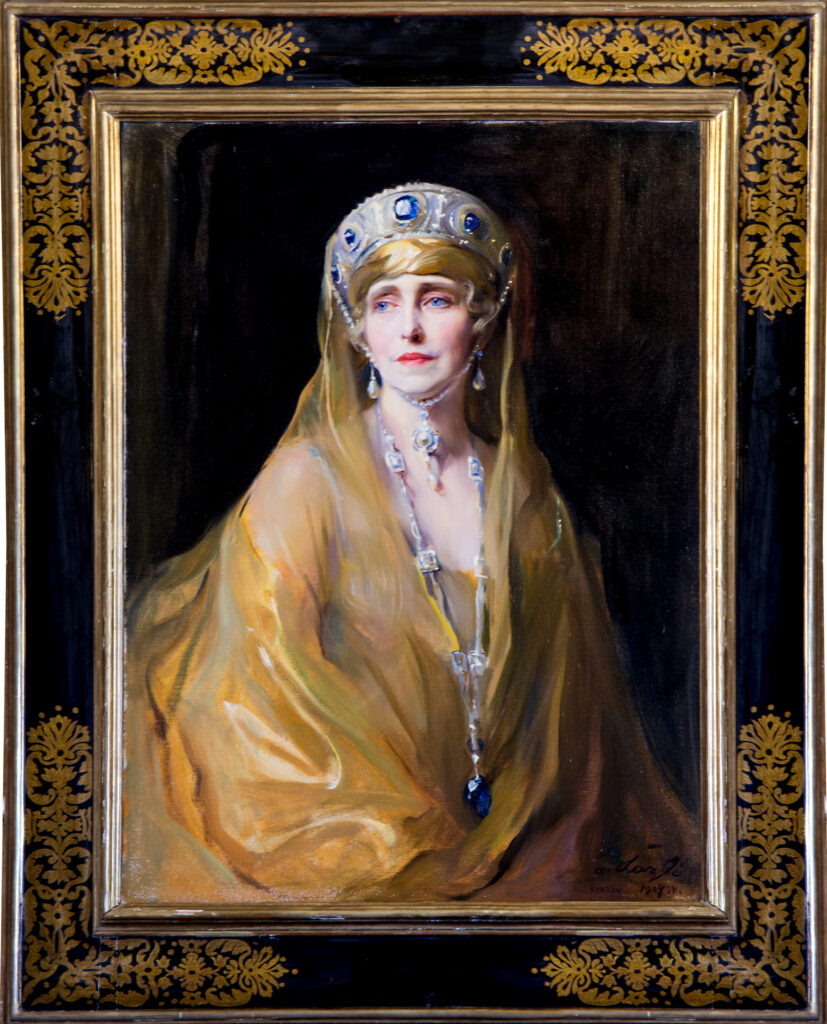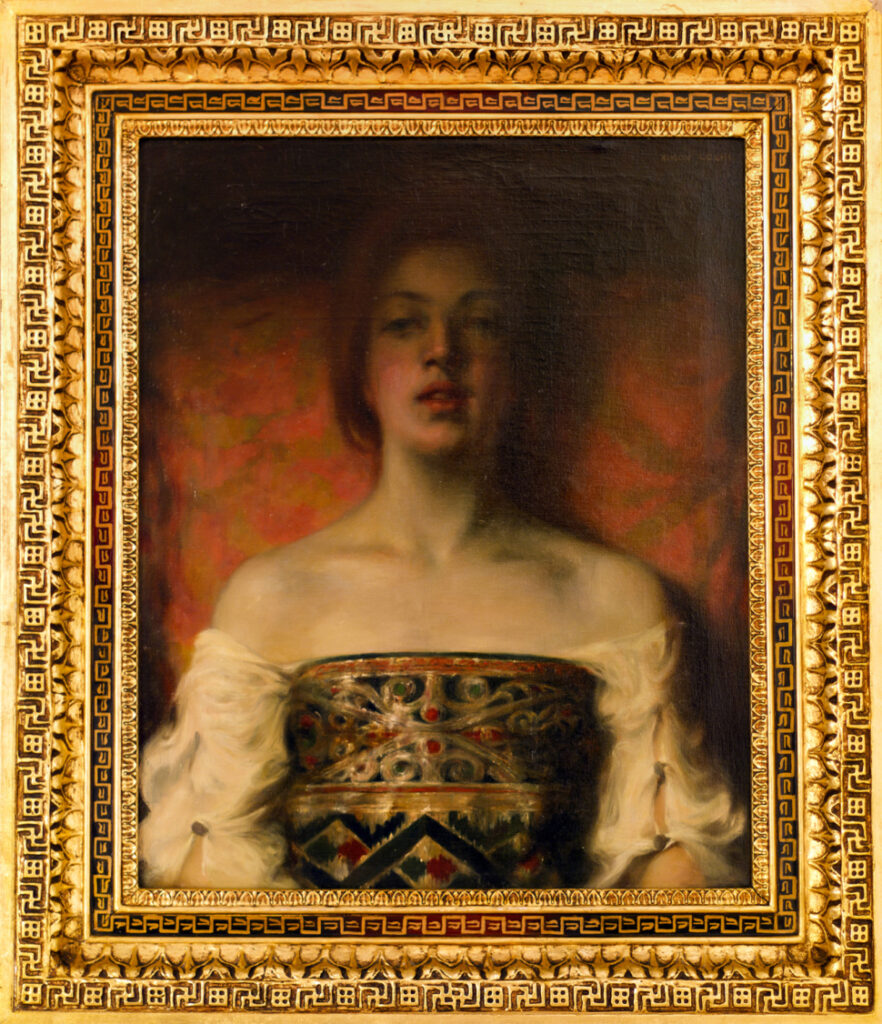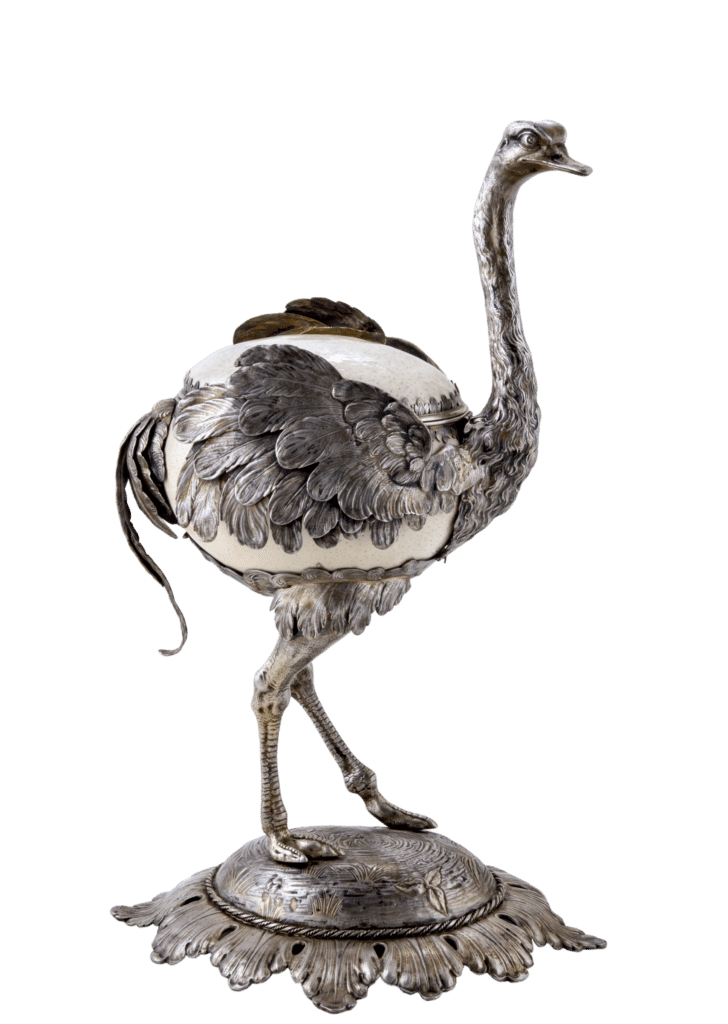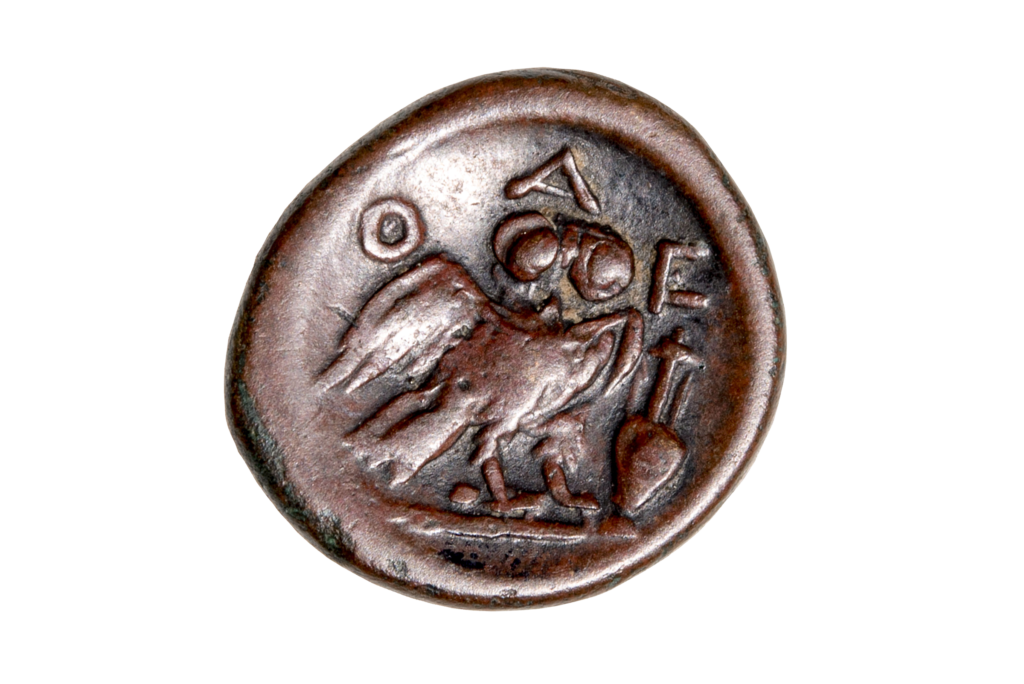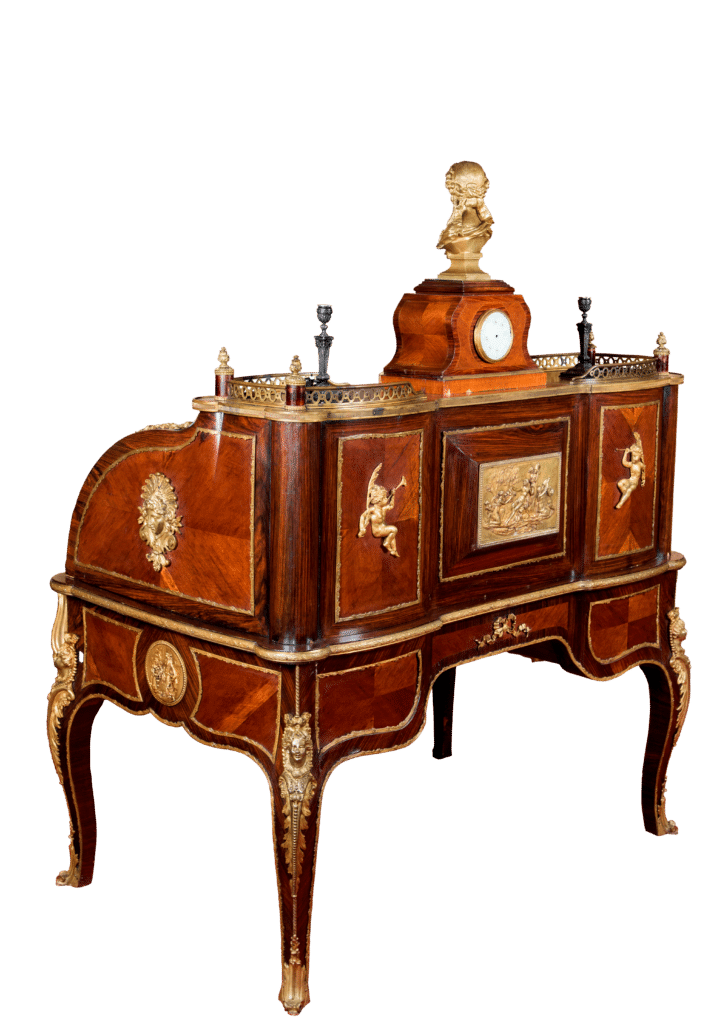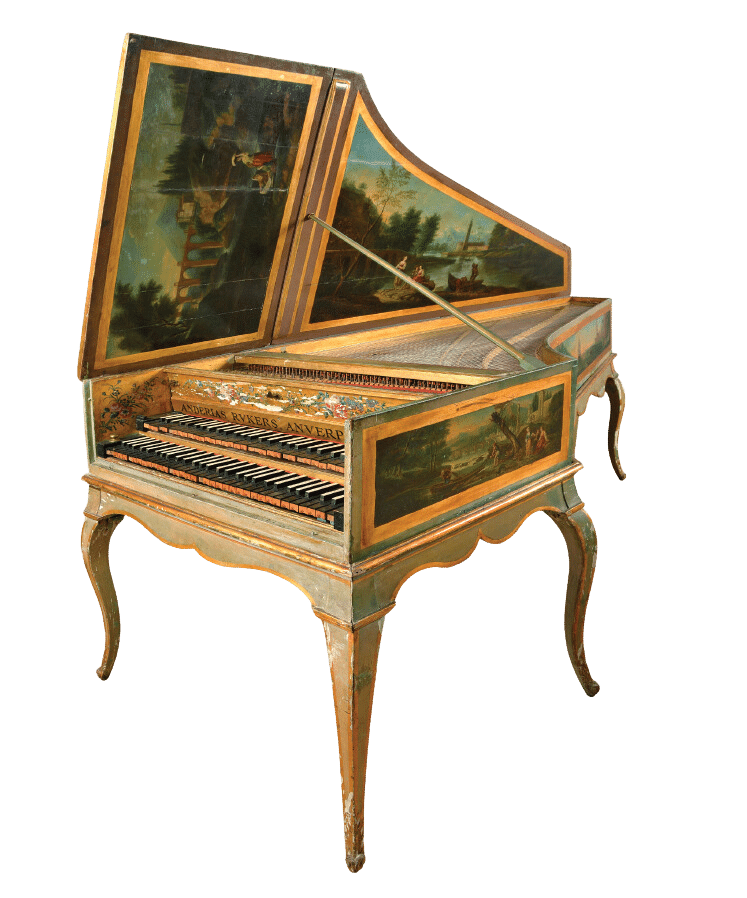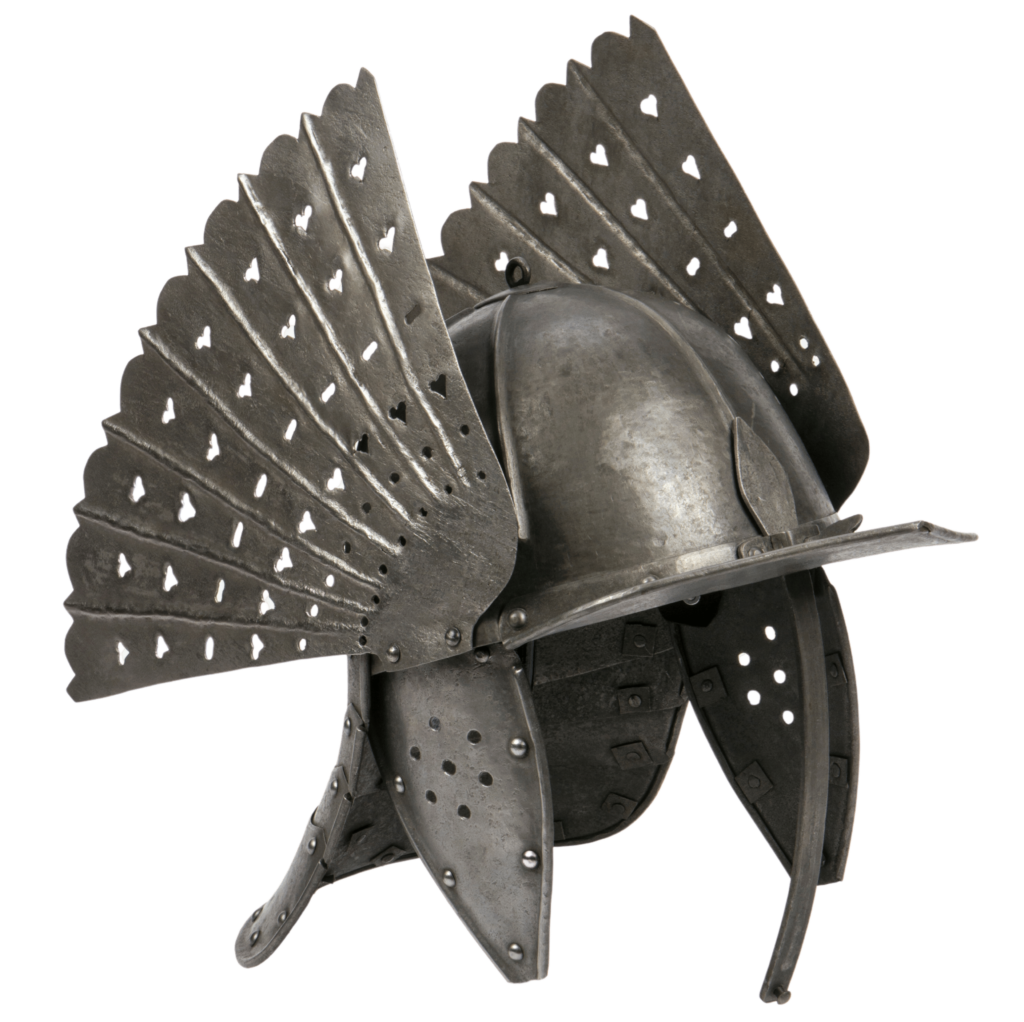On October 15, 1893, in the great princely apartment of the Peleş Castle, at the foot of the Bucegi Mountains, the first son of the princely couple of Romania, Ferdinand de Hohenzollern and Maria de Edinburg, saw the light of day. His birth represented a moment awaited with deep emotion by the entire Romanian people, who had entrusted their destiny in the hands of the Romanian monarchy. The joy of the event was greeted, according to tradition, with a hundred cannon volleys. The little prince was named Carol, in honor of his uncle, King Carol I, who thus saw the Hohenzollern dynasty consolidated on Romanian soil. Carol was the first Hohenzollern born in our country, baptized according to the Constitution, in the Orthodox confession. Intelligent and cultured, with a charismatic personality, Prince Carol benefits from King Carol I of unparalleled affection.
Prince Carol spent the first years of his childhood at Peleș Castle, under the careful supervision of the monarch of independent Romania. Carol I assumed the responsibility of educating the little royal offspring, often ignoring the parents' opinions. Together with his wife, Queen Elizabeth will shower her grandfatherly love on the prince, pampering him beyond measure. The two governesses, Miss Winter from England and Miss Folliet from Ireland, employed by the king developed the little prince's ability to learn foreign languages. He was fluent in Romanian, German, English, French and Russian. His training was entrusted to private teachers Constantin Litzica - Latin and philosophy, Gheorghe Adamescu - Romanian, M. Blumel - German, Marin Dumitrescu - history, E. Escauffier - French, B. Ionescu - mathematics, Ghe. Murgoci - chemistry and physics, Nicolae Iorga, the renowned Romanian man of culture, the one who deepens Prince Carol's knowledge of the country's language, literature, history and geography. The intelligence of the royal offspring did not leave the historian indifferent, who excitedly remarked: "even if he doesn't read much, he knows how to listen and remember - and with a critical spirit! - what he had heard". At the age of nine, Arnold Mohrlen, a Swiss pedagogue, becomes Prince Carol's tutor. From adolescence, the prince was preoccupied with reading, botany (he did yerbera, following his father's lifelong passion), but also with military training and uniforms. Like Ferdinand, starting from January 1914, he attends the Military Academy in Potsdam, Germany. At the age of 20, at the death of Charles I, the prince was a cultured young man with a strong personality. During the Second Balkan War, from 1913, as well as during the First World War (1916-1918), the prince accompanied his mother on the visits of the Romanian Red Cross service and participated in army inspections, attracting her sympathy Romanian soldiers.
On February 21, 1920, Prince Carol left on a trip around the world. In the next seven months he visits Greece (Athens), Istanbul, Alexandria, Cairo (where he receives the Grand Cordon of the Order of Mohammed), Eritrea, India (Bombay), Rangoon, Burma, Hong Kong, Shanghai, Japan (Tokyo where he receives the Order of the Chrysanthemum) , Hawaii, USA. On September 20, he arrives in Europe, in London, to return to Romania a month later. During this period, Prince Carol made lasting friendships with important personalities of the countries he visited. In India, the Maharajah of Kapurthala had the honor of having the Romanian prince as his guest, both having philately as their passion. A few years later, at Peles Castle, the Maharajah offers King Charles II, in addition to the valuable teak furniture set, and a box containing a vial with a grain of rice inscribed with 382 letters written in English, tribute to the Romanian monarch, accompanied by a photograph with the honorable maharajah's autograph.
In 1921, he met Princess Elena, the daughter of King Constantine of Greece. The two would marry in the same year, on March 10, in Athens. On October 25, 1921, Mihai, the future king of Romania, was born at the Foisor castle in Sinaia. In 1925, Carol met Elena Lupescu, the one who would play a fundamental role in the royal biography.
After repeated abdications of the throne of Romania, the Romanian political class and the royal family, deeply affected, decide drastic measures against Prince Carol. Thus, on January 1, 1926, in Official Gazette the decision of the Crown Council, dated December 31, 1925, from Peleș Castle, regarding the abdication of the throne, is published. Three days later, on January 4, 1926, the Parliament decides to designate the little prince Mihai, only five years old, as heir. The leadership of the country is provisionally entrusted to the Regency. By renouncing the status of heir, Carol becomes the citizen Carol Caraiman. Between 1925-1930, destiny took him to France, together with Elena Lupescu, the woman for whom he had a consuming passion. But fatality seemed to follow Romania: on July 18, 1927, following a relentless illness, King Ferdinand died, and the Regency would prove its inefficiency in the face of the country's economic and social problems. All this contributes to the accentuation of the political crisis, against the background of which Carol's name is spoken more and more frequently. In him, the old sympathizers and even a part of the Regency see the only saving solution. Despite his declarations, since October 1927, Prince Carol aimed to return to the country. The attempt to co-opt on his side through Mihail Manoilescu, Iuliu Maniu, Nicolae Iorga and General Alexandru Averescu, the political leaders of the moment, assures the prince of their goodwill. On April 21, 1928, on the occasion of a visit to England, Carol declared unequivocally to the people of Greater Romania, through the English press: "I want to return, by your will, to lead Romania" and publishes a list of 21 points related to the organization and development of the country. On November 3 of the same year, the liberal government led by Vintilă Brătianu resigned, and on November 10, 1928, it was replaced by the peasant government led by Iuliu Maniu. The new government brings with it an enormous amount of popularity, but the global economic crisis, as well as internal problems, accentuate political instability. On this background, the Carlist current is gaining ground. Thus, towards the evening of June 6, 1930, after a flight full of adventures, Carol arrives in Bucharest. On June 8, the parliament decides to cancel the laws that removed him from the succession and he is unanimously proclaimed King. This day will be celebrated annually, for a decade, as Restoration Day.
During the reign of King Carol II, Romania experienced an unprecedented economic boom, due, in part, to the monarch's numerous visits to European countries, crowned by diplomatic and economic successes. The king's interest in the development of industry, agriculture, trade, equipping the army, participating in numerous exhibitions, the cultural and artistic ascension attracted the love and sympathy of the Romanian people. The official duties of the monarch took place in parallel with the practice of his hobbies, the sovereign being an avid philatelist, hunter, practitioner of various sports (motoring, aviation). King Carol II's disappointment with the activity of the Romanian political class in the third decade of the 20th century, led him to take drastic measures, eventually ending up with the restriction of the parliamentary democracy system. The peak of the king's authoritarian policy was reached in 1938, the year in which the royal dictatorship was decreed and the abolition of political parties, replaced by a single party, the National Renaissance Front. The establishment of the Carlist dictatorship was facilitated by the European context and the disappointment of the population towards the political parties, crushed by the fights between them and disinterested in the fate of the country. Extremist movements, such as the Legionnaire Movement, known especially for acts of violence and anti-Semitism, became increasingly active towards the end of the Carlist decade. During the ten years of his reign, two prime ministers were assassinated, the liberal IG Duca (December 1933) and the peasant Armand Călinescu (September 1939), who later became the head of an authoritarian government. All this time, black clouds are gathering over Europe, harbingers of a new World War. Surrounded by a cabal made up of businessmen and financiers, Charles II became increasingly unpopular. The years that followed would hasten the end of Greater Romania: in August 1939, a secret protocol was signed between Hitler's Germany and Stalin's USSR, which provided, among other things, for the territorial division of Romania, the king's fears becoming a certainty. This agreement was implemented a year later, when the USSR occupied Bessarabia and Northern Bucovina, and Hungary, supported by the Germans, Northwestern Transylvania. The loss of these territories without a single shot being fired was considered a national shame, and Carol became the target of the nationalists. The lack of domestic and international support, the inability to cope with manifestations of dissatisfaction, leads King Carol II to abdicate on September 6, 1940. In the morning of September 7, 1940, the sovereign leaves Romania, accompanied by Elena Lupescu. After long wanderings around the world, he settled in Portugal in Estoril, at Villa Mar del Sol, where he died on April 3, 1953.

